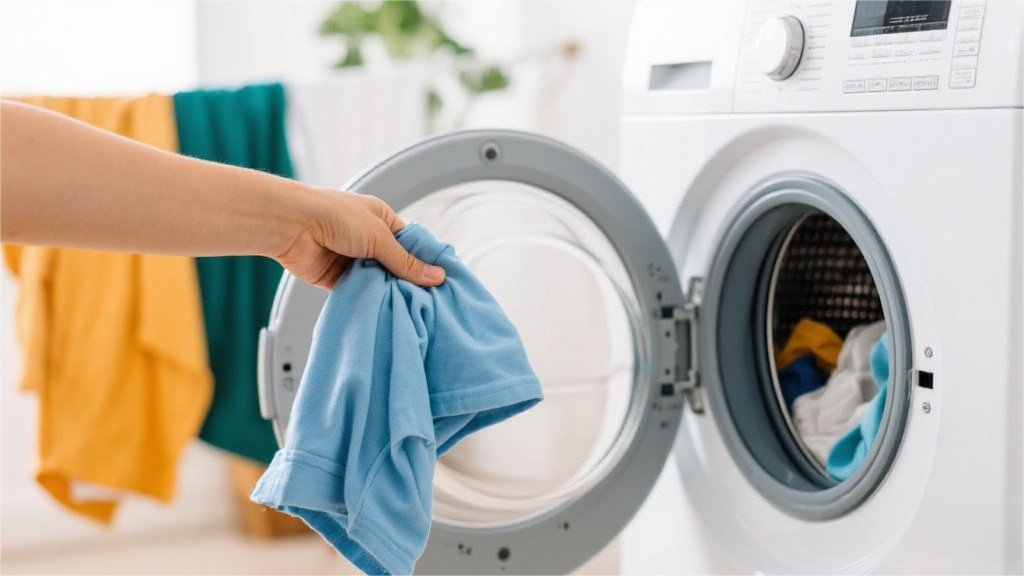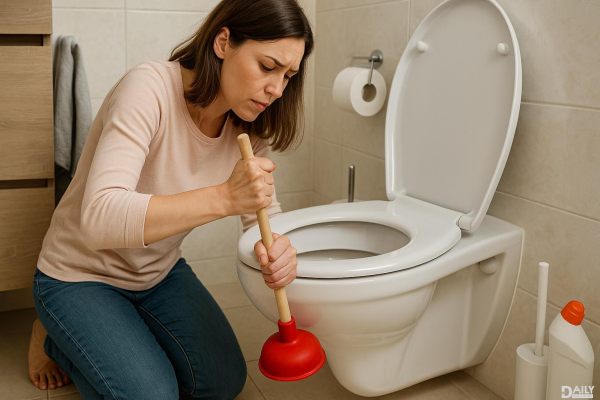Kitchen cabinets are like that one junk drawer we all have—somehow, no matter how hard you try, they always end up a mess. But here’s the thing: organizing them doesn’t have to be a weekend-long project that leaves you exhausted and questioning your life choices. With a few smart tweaks, you can turn those chaotic cabinets into functional, stress-free zones. And the best part? You can do it in bite-sized chunks—15 minutes at a time. So let’s roll up our sleeves and dive into some game-changing strategies that’ll make your kitchen feel like it belongs in a home magazine (or at least close enough).
Relocate the Randoms
First things first—your kitchen cabinets aren’t a catch-all for random household items. Before you even think about organizing, do a quick sweep for anything that doesn’t belong. That half-empty bottle of sunscreen from last summer? The random collection of takeout menus? The batteries that mysteriously migrated from the junk drawer? Evict them. Your kitchen should be for cooking, not storing things that belong in the bathroom or garage. A quick purge of these misfits will instantly free up space and make the actual organizing part way easier.
Declutter Ruthlessly
Now it’s time to channel your inner Marie Kondo. Open those cabinets and ask yourself: Do I actually use this? If the answer is no (or “I might need it someday”), it’s time to let it go. That avocado slicer you used once in 2018? The novelty-shaped cookie cutters still in their packaging? The mismatched coffee mugs from every vacation you’ve ever taken? Be ruthless. Donate what’s still in good shape, recycle what you can, and toss the rest. The less stuff you have, the easier it is to keep things organized—and the less time you’ll spend digging for the one spatula you actually like.
Sort Like With Like
Ever opened a cabinet and felt like you were playing a frustrating game of “Where’s Waldo?” with your spices? The solution is simple: group similar items together. Spices with spices, baking supplies with baking supplies, snacks with snacks. Think of it like high school cliques—oils and vinegars belong together, but they don’t need to mingle with your cereal boxes. This not only makes everything easier to find but also helps you see what you actually have (and what you’re running low on). No more buying a third bottle of vanilla extract because you couldn’t find the other two buried in the abyss.
Maximize Vertical Space
If you’re only using the flat surface of your shelves, you’re missing out on prime real estate. Stackable bins, shelf risers, and even tension rods can help you double your storage by taking advantage of vertical space. Imagine being able to fit two rows of spices instead of one, or stacking your baking sheets upright instead of in a precarious pile. It’s like adding an extra floor to your cabinet without any construction required. Plus, it makes everything more visible, so you’re not constantly playing Jenga with your dishes.
Ditch the Duplicates
Unless you’re feeding a small army on the regular, you probably don’t need seven wooden spoons or three cheese graters. Pick your favorites—the ones you actually reach for—and let the rest go. Same goes for mismatched Tupperware, chipped mugs, and that weirdly shaped bowl you’ve never used but keep “just in case.” Fewer items mean less clutter, which means less stress every time you open a cabinet. And let’s be real—when was the last time you actually needed that novelty margarita glass?
Decant Dry Goods
There’s something oddly satisfying about seeing all your pantry staples lined up in matching containers. Not only does it look Instagram-worthy, but it also keeps things fresher longer. Ditch the flimsy bags of flour and sugar and transfer them into airtight, labeled containers. Bonus: You’ll always know when you’re running low, because you can actually see what’s inside. No more discovering a bag of petrified brown sugar at the back of the cabinet. And if you really want to level up, use clear containers so you can spot what you need at a glance.
Create Zones
Give every cabinet a purpose. One for plates and bowls, one for glassware, one for pots and pans—you get the idea. This isn’t just about aesthetics; it’s about functionality. When everything has a designated spot, putting things away becomes second nature (even for the rest of your household). No more guessing where the colander lives or why the coffee filters ended up next to the mixing bowls. Zones also make it easier to see what you have, so you’re less likely to buy duplicates or let things go to waste.
Add a Lazy Susan
Lazy Susans aren’t just for holiday dinners—they’re a game-changer for deep cabinets and hard-to-reach corners. Use one for oils and vinegars, another for spices, or even one for cleaning supplies under the sink. The spinning action means you’ll never have to play “dig for the soy sauce” again. Plus, there’s something weirdly fun about giving it a spin and watching everything rotate into place. It’s like a tiny carnival ride for your condiments.
Bins For the Win
If your snacks and dry goods tend to migrate all over the place, it’s time to corral them into bins. Group similar items together—breakfast stuff in one bin, snacks in another, baking supplies in a third. Label them if you’re feeling fancy (or if you live with people who can’t seem to remember where things go). Bins also work wonders for containing small, loose items like tea bags, seasoning packets, or those random twist ties that multiply like rabbits. Think of it as giving everything a little home where it can’t escape.
Corral Lids With a Rack
Tupperware lids have a way of staging a rebellion every time you open the cabinet. Solve the problem with a simple rack or file organizer to keep them upright and contained. No more digging through a pile of lids to find the one that fits the container you’re using. If you’re feeling extra organized, match lids to containers and store them together—no more orphaned lids or mystery containers without tops. Your future self will thank you when meal prep doesn’t involve a lid avalanche.
Embrace Drawer Dividers
Drawer dividers aren’t just for silverware. Use them to organize cooking gadgets, measuring cups, bag clips, or even reusable straws. Everything gets its own little spot, which means no more rummaging through a tangled mess of utensils to find the can opener. Bonus: It makes unloading the dishwasher way faster, because you’re not playing a guessing game about where things go. And if you really want to go all out, label the sections so there’s zero confusion.
Prioritize Accessibility
Store the things you use every day at eye level or within easy reach. The fancy platters you only break out for holidays? They can live on the top shelf. The cereal bowls you use every morning? Front and center. This simple shift means less climbing on counters or squatting to dig through lower cabinets—just grab what you need and go. It’s all about making your kitchen work for you, not the other way around.
Label Everything
Labels aren’t just for the hyper-organized—they’re for anyone who’s ever opened a cabinet and thought, “Wait, where did I put the pasta?” A simple label on a bin, jar, or shelf eliminates the guesswork (and the frustration). Plus, it helps keep everyone in the household on the same page. No more finding the coffee filters in the snack cabinet because someone didn’t know where they belonged. Labels are like little love notes to your future self, saving you time and sanity.
Invest in Sturdy Hooks
Hooks are the unsung heroes of kitchen organization. Mount a few inside cabinet doors or on the walls to hang oven mitts, measuring spoons, aprons, or even cutting boards. They’re cheap, easy to install, and they free up valuable drawer space. Plus, they keep things visible so you’re not digging through a drawer every time you need a potholder. It’s like giving your kitchen tools their own little parking spots.
Create an Appliance Garage
If your countertops are overrun with gadgets, consider creating an “appliance garage”—a dedicated cabinet for your blender, toaster, or other bulky items. Store the heaviest appliances on lower shelves so you don’t have to worry about them falling on your head. And if you’re really tight on space, consider a rolling cart that can tuck away when not in use. The goal is to keep things accessible but out of sight, so your counters stay clutter-free.
Create a Coffee (or Tea!) Station
Mornings are chaotic enough without having to hunt for your coffee filters or favorite mug. Dedicate one cabinet (or even just a shelf) to all things caffeine—mugs, filters, pods, sweeteners, and tea bags. Bonus points if you add a small tray to corral everything together. When your coffee setup is organized, the rest of the day feels a little easier. And if you’re a tea drinker, the same principle applies—keep your teas, honey, and favorite mug in one spot so you can brew without the scavenger hunt.
Contain the Chaos
Small items like seasoning packets, rubber bands, or chip clips have a way of disappearing into the abyss. Solve the problem by storing them in small jars, bins, or baskets. Think of it as a grown-up version of a junk drawer—everything has a place, but it’s contained so it doesn’t take over. No more digging through a pile of random packets to find the one taco seasoning you need. It’s a small change that makes a big difference in daily functionality.
Use Over-the-Door Racks
Don’t overlook the space behind your cabinet doors. Over-the-door racks are perfect for storing cutting boards, baking sheets, or even spices. They make use of every inch of space without getting in your way. And if you’re tight on drawer space, consider adding a small rack for foil, plastic wrap, or parchment paper. It’s like discovering a whole new storage zone you didn’t know you had.
Stage a "Keep or Toss" Moment
Every so often, take 15 minutes to pull out anything chipped, cracked, or past its prime. That warped cutting board? The mug with the handle that’s barely hanging on? The plastic containers with no lids? Let them go. Holding onto things that are barely functional just adds to the clutter. Your future self will thank you when you’re not wrestling with a cracked bowl or a lid that never quite fits.
Try the Display/Conceal Rule
Not everything in your cabinets needs to be hidden away. If you have pretty dishes, pitchers, or serving platters, give them a little spotlight. Store them where you can see them—it’ll make your kitchen feel more intentional and put-together. On the flip side, tuck away the utilitarian stuff (think cheese graters, sponges, and mismatched Tupperware) so it’s not the first thing you see when you open a cabinet. It’s all about balancing function with aesthetics.
At the end of the day, organizing your kitchen cabinets isn’t about perfection—it’s about creating systems that make your life easier. You don’t have to tackle everything at once; just pick one tip, spend 15 minutes on it, and see how it feels. Small changes add up, and before you know it, your kitchen will be a place you actually enjoy spending time in. And who knows? You might even find that cumin on the first try.
























